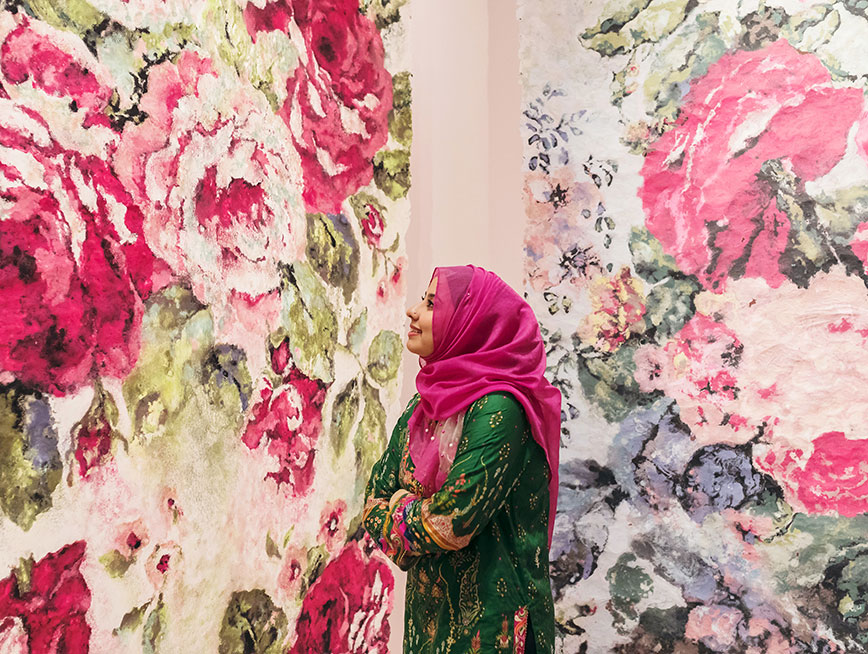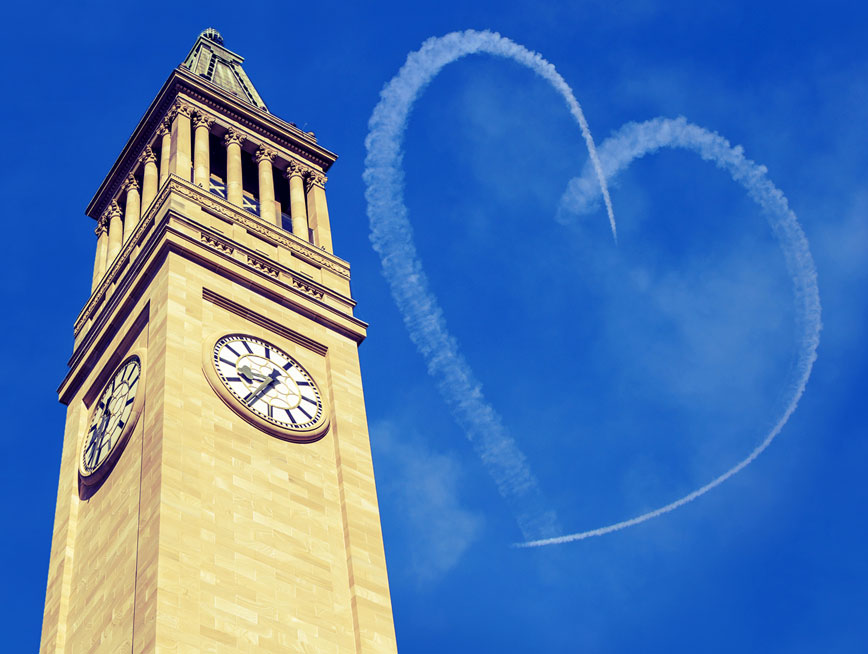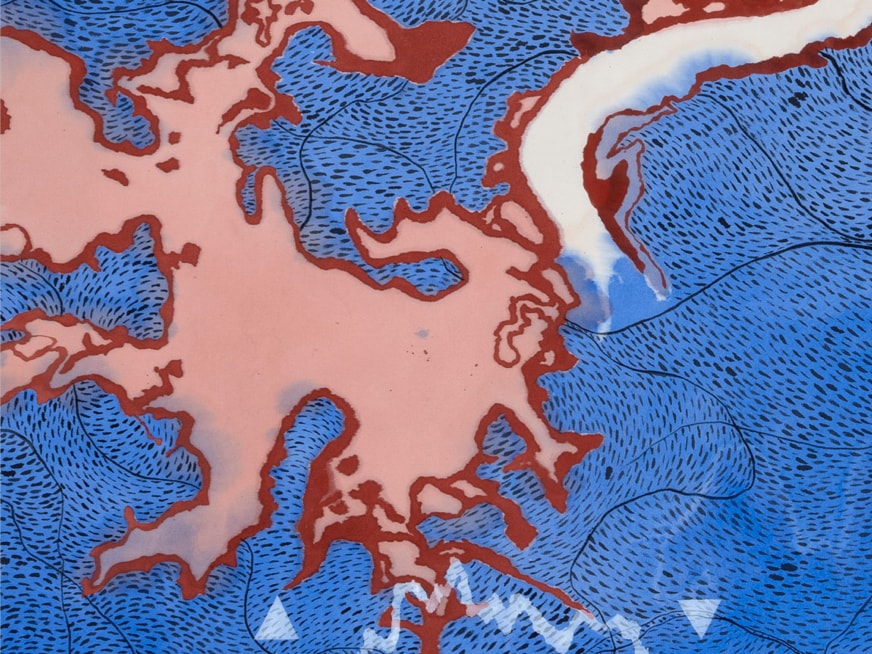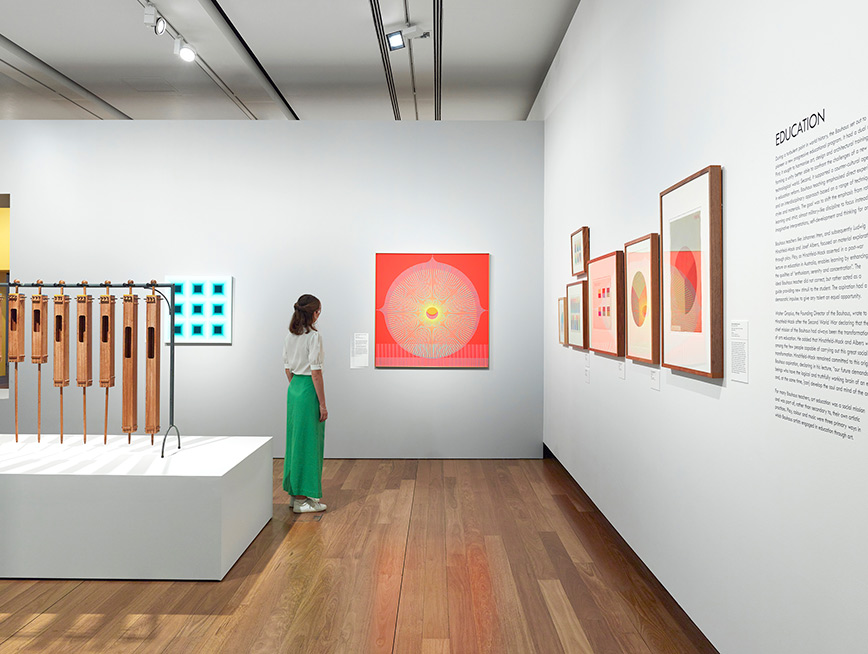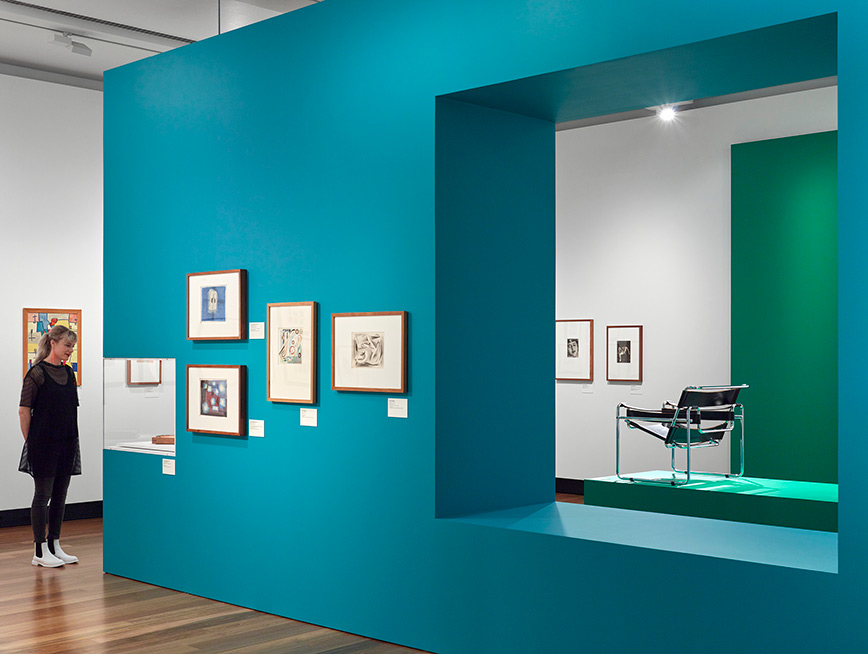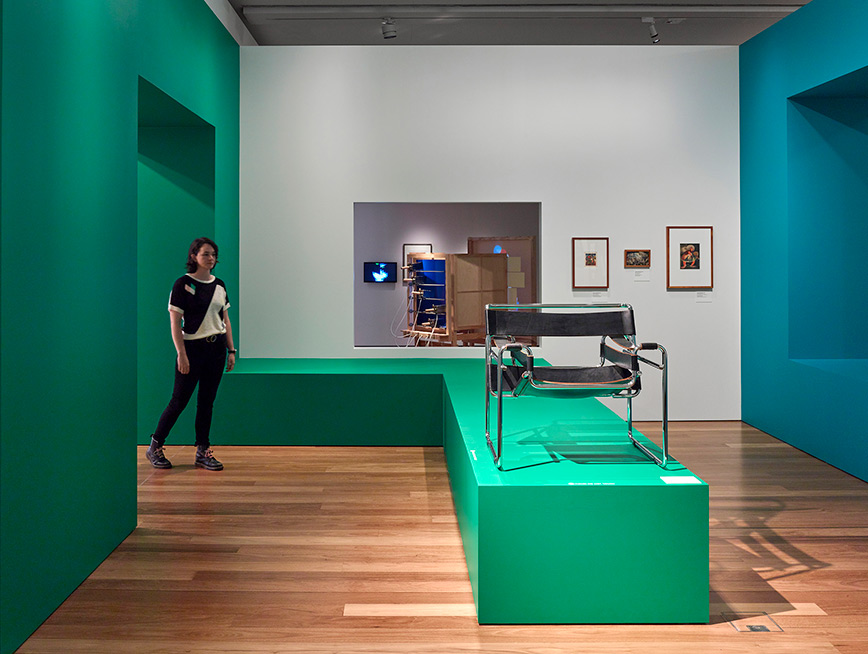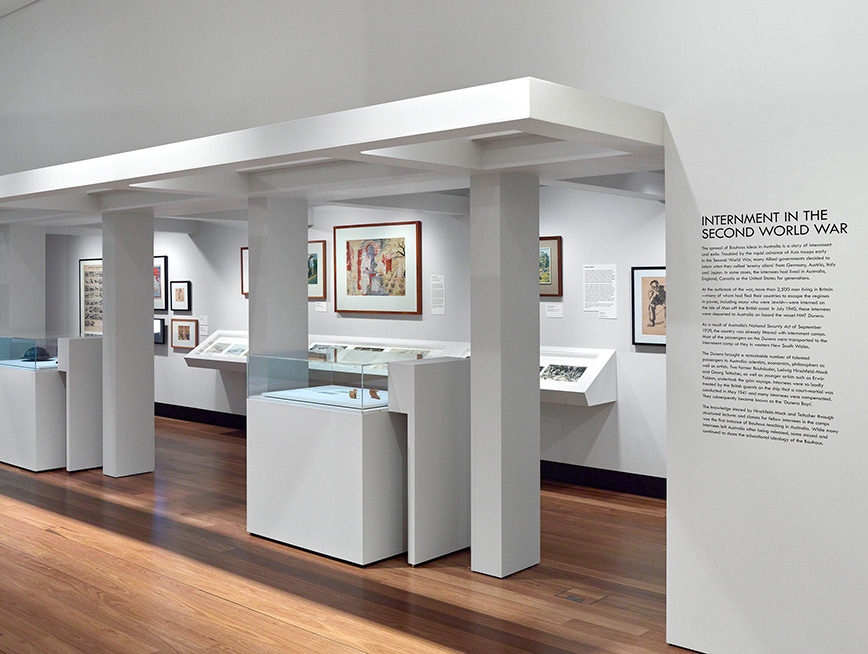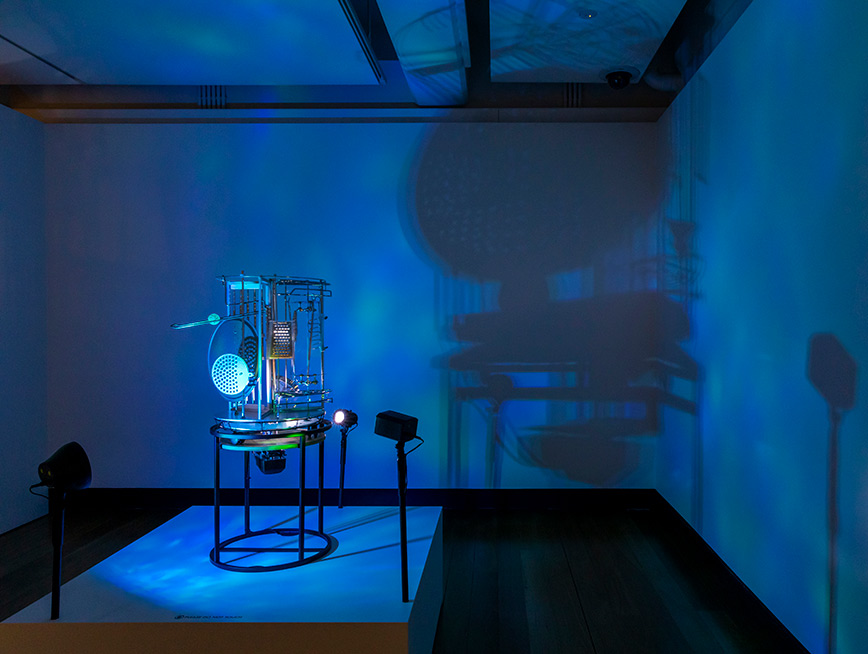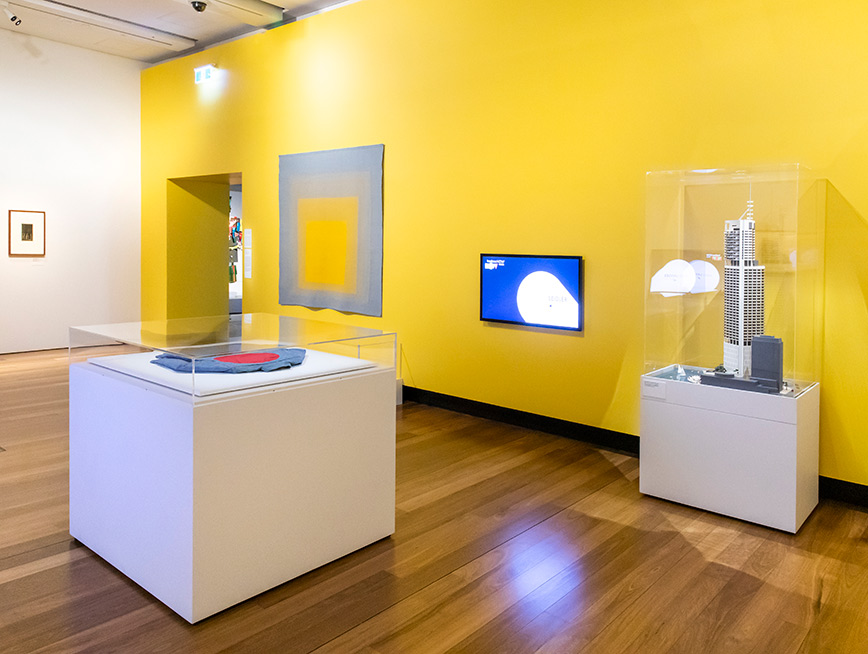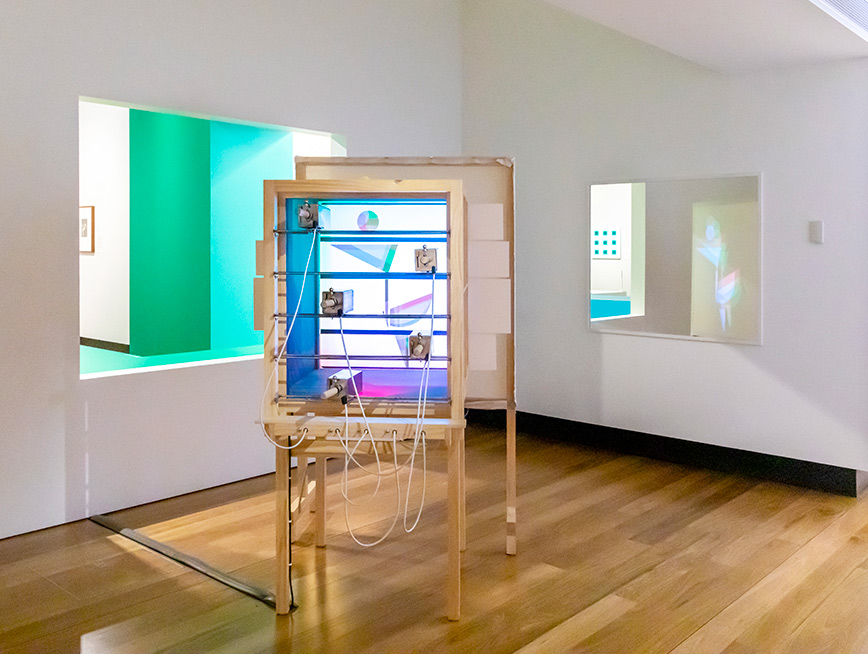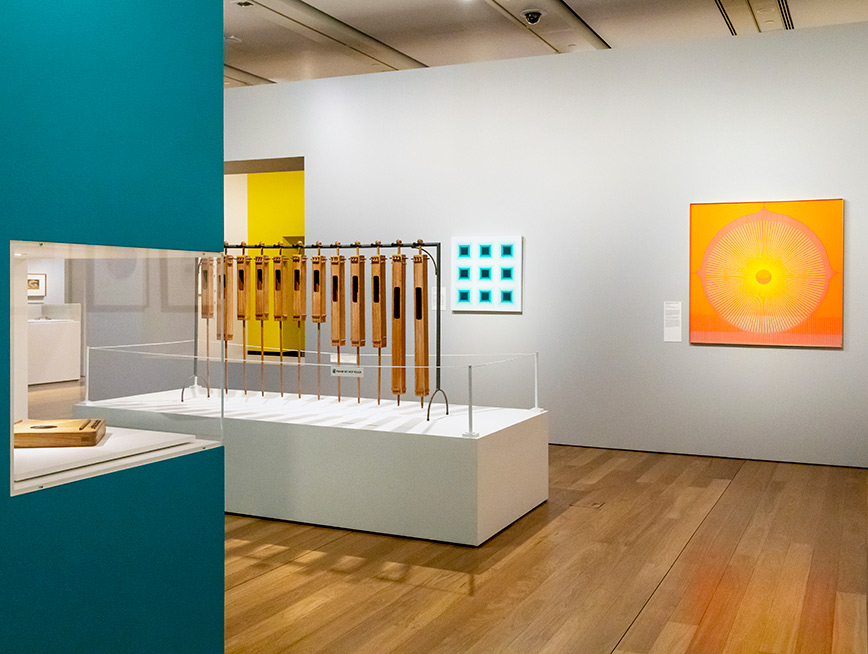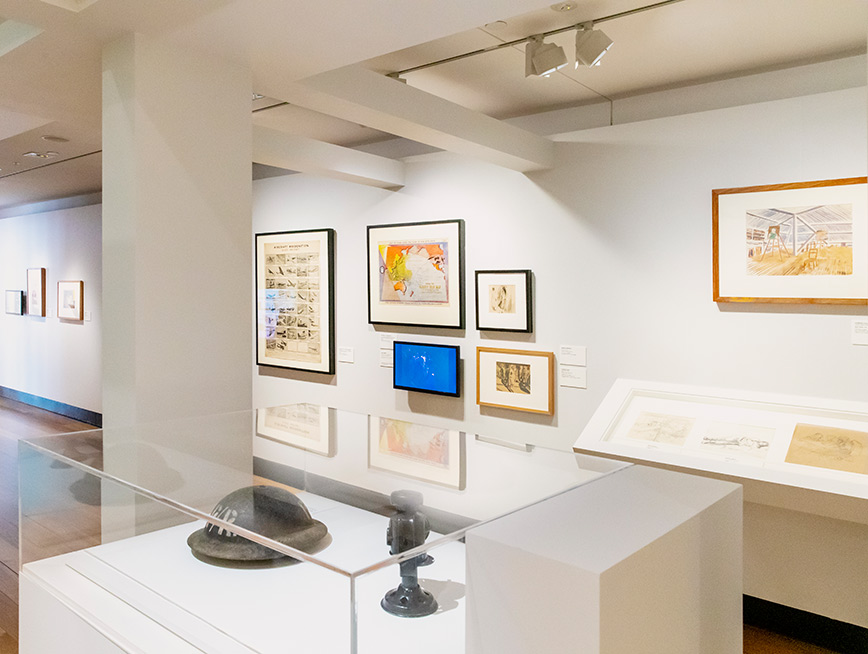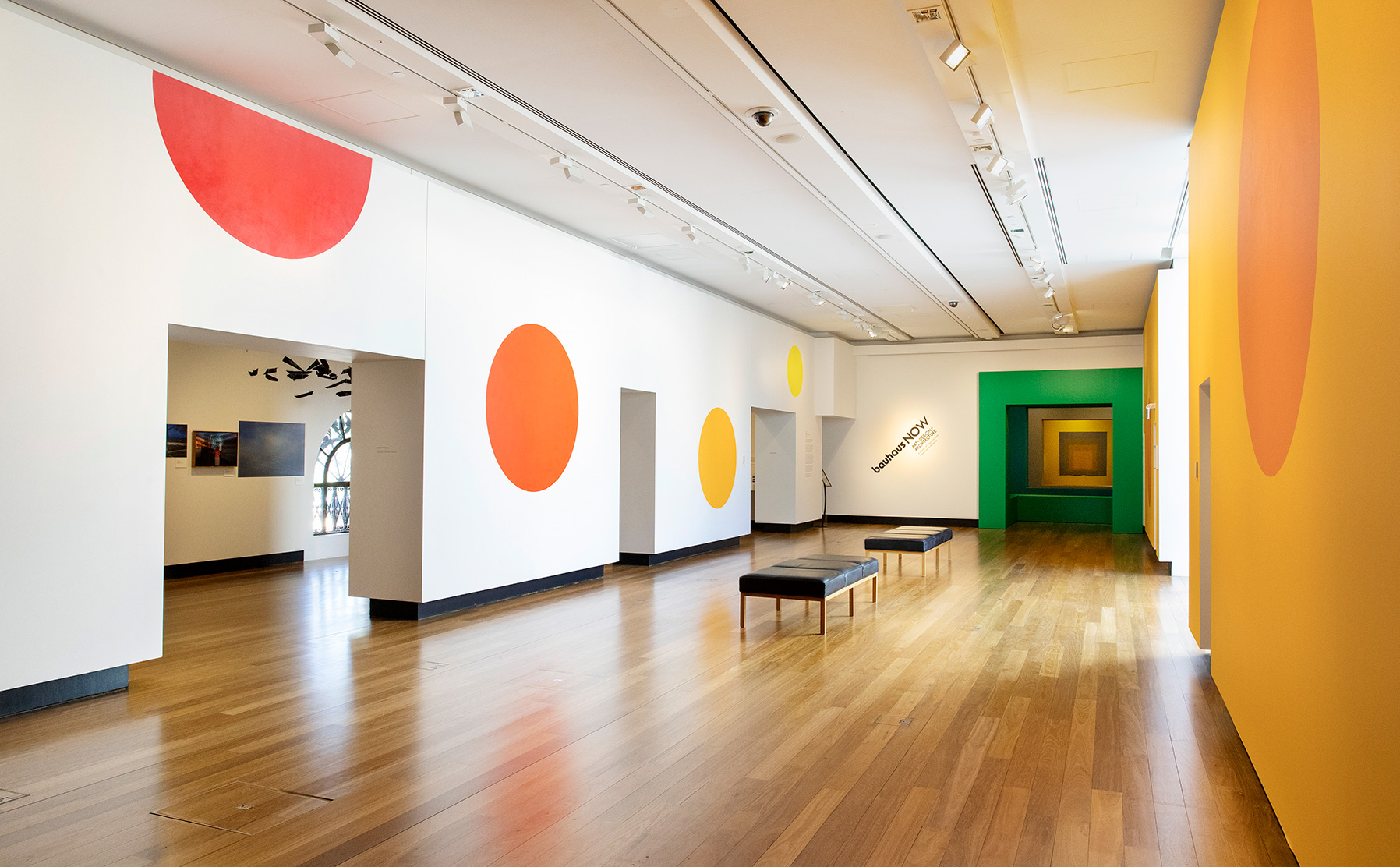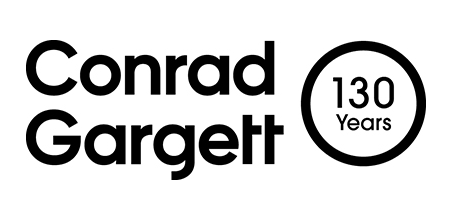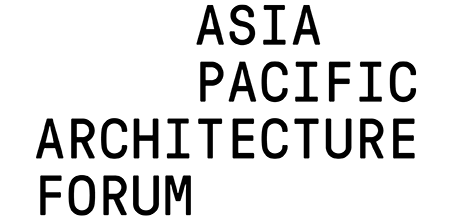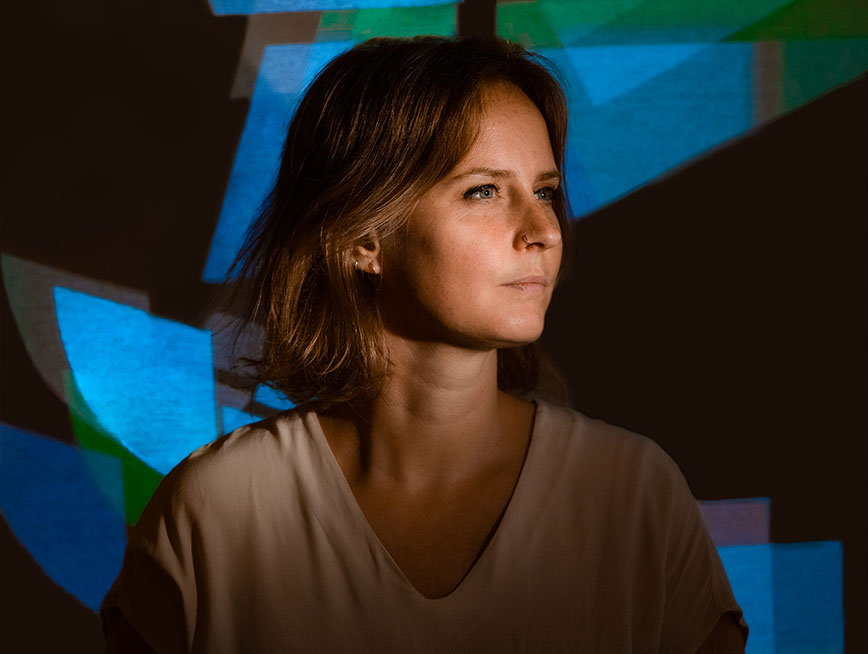A legacy of migration and modernism in Brisbane.
Bauhaus Now brought to life the little-known story of how revolutionary ideas of the Weimar Republic in Germany influenced modernist art, design and architecture in Brisbane and Australia. The exhibition revealed the migrant and refugee contribution to Australian life and art history in the inter-war period and post-Second World War years.
The famous Bauhaus school started in Germany in 1919 and was closed by the Nazis in 1933. From the 1930s onwards, a significant number of central European, Austrian and German refugees and émigrés came to Australia seeking refuge from war and fascism, many of whom were active in arts education. Through these exiles and internees, educational ideas filtered into Australia that revealed the influence of the Bauhaus.
Bauhaus Now featured original artworks from this period, plus a series of vivid contemporary recreations that demonstrated both the impact of this movement in Brisbane and Australian art history. The exhibition showed how the legacy of these powerful ideas is being re-interpreted today.
The thirty artists included in the exhibition included: Andy Harwood, Christopher Handran, El Lissitzky, Eleonore Lange, Erwin Fabian, Francis Lymburner, Frank Hinder, Georg Teltscher, Gertrude Langer, Grit Kallin-Fischer, Gwendolyn Grant, Harry Seidler, Josef Albers, Joseph Stanislaus Ostoja-Kotkowski, Justene Williams, Karl Langer, KurtSchwerdtfeger, Laszlo Moholy-Nagy, Laurence Collinson, Laurence Hope, Ludwig Hirschfeld-Mack, Marcel Breuer, Marianne Brandt, Michael Candy, Normana Wight, Oskar Schlemmer, Paul Bai, Udo Sellbach, Viking Eggeling and Wassily Kandinsky.
Bauhaus Now was curated by Professor Andrew McNamara with exhibition design by Dirk Yates, Speculative Architecture. The exhibition was staged from 18 September 2020 – 18 April 2021.

